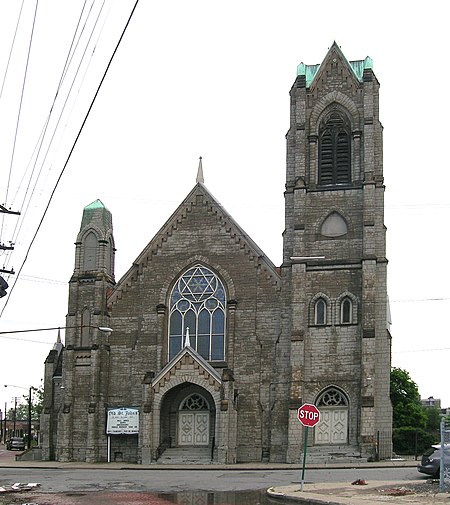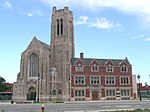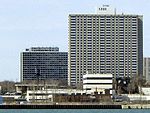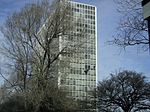St. John's–St. Luke's Evangelical Church
19th-century Lutheran churches in the United StatesChurches completed in 1872Churches in DetroitChurches on the National Register of Historic Places in MichiganGerman-American culture in Detroit ... and 5 more
Gothic Revival church buildings in MichiganLutheran churches in MichiganNational Register of Historic Places in DetroitRomanesque Revival church buildings in MichiganUnited Church of Christ churches in Michigan

St. John's–St. Luke's Evangelical Church is a congregation of the United Church of Christ located at 2120 Russell Street in Detroit, Michigan. It was listed on the National Register of Historic Places in 1982.
Excerpt from the Wikipedia article St. John's–St. Luke's Evangelical Church (License: CC BY-SA 3.0, Authors, Images).St. John's–St. Luke's Evangelical Church
Gratiot Avenue, Detroit
Geographical coordinates (GPS) Address External links Nearby Places Show on map
Geographical coordinates (GPS)
| Latitude | Longitude |
|---|---|
| N 42.343333333333 ° | E -83.038055555556 ° |
Address
Saint John and Saint Luke United Church of Christ
Gratiot Avenue 2122
48207 Detroit
Michigan, United States
Open on Google Maps









